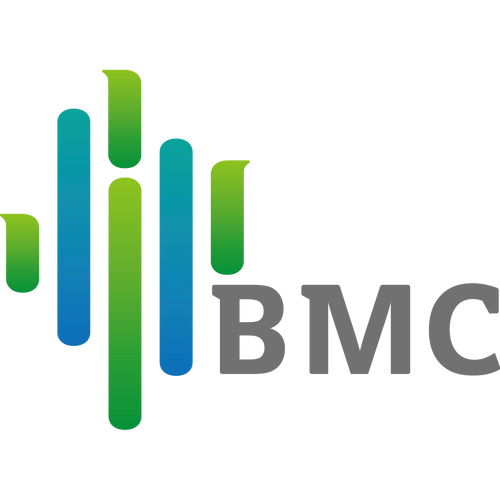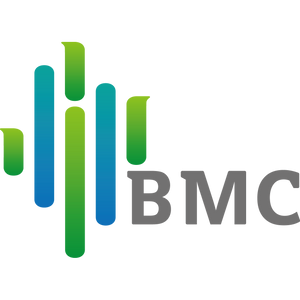The mode of mechanical ventilation support is defined by the practicability and ventilation mode of different types of respiratory support.
A mode controller is an electronic, gas or microprocessor-based system that provides a combination of respiratory support based on set rules and feedback data (condition variables).
The five most common respiratory support modes are volume assisted control (VACV), pressure assisted control (PACV), volume synchronous intermittent mandatory ventilation (V-SIMV), pressure synchronous intermittent mandatory ventilation (P-SIMV) and separate pressure support ventilation (PSV) (Table 1).
Based on the setting to control the respiratory rate, VACV and PACV can move from complete mechanical control to complete assisted breathing.
V-SIMV and P-SIMV can each provide volume assist (VA) and volume control (VC) or pressure assist (VA) and pressure control (VC) breathing support, interspersed with unsupported or pressure supported (PS) breathing.
Data from international surveys show that the most commonly used model in the world is capacity-assisted control, followed by stress-assisted control.
The application of IMV mode has been declining, while the application of PSV mode alone is on the rise.
The choice of mechanical ventilation mode depends on clinical objectives and physicians' understanding of the characteristics of mechanical ventilation mode. The setting of the instructed respiratory rate depends on the reliability of the respiratory rate triggered by the patient's efforts in order to provide an appropriate respiratory support frequency. Compared with the flow / volume target, the man-machine synchronization of the pressure target is better than the flow / volume target of ensuring capacity.
When the patient triggers pressure target breathing, the switch between time (pressure-assisted respiration, PA) and flow rate (pressure-supported respiration, PS) depends on the patient's comfort / synchronization. Airway pressure release ventilation (APRV) is often regarded as a new ventilation mode, but in fact it is only a simple improvement of setting the inspiratory time to greater than the expiratory time in P-SIMV mode. As a result, the patient's efforts in the inspiratory phase can lead to additional unassisted or pressure support breathing.
When setting the APRV mode, one thing that is puzzling is that the inspiratory pressure of the APRV mode in most ventilators is set by atmospheric pressure rather than the set expiratory pressure.
Proponents of APRV argue that an extended inspiratory ratio increases mean airway pressure without the need for additional positive end-expiratory pressure (PEEP) or tidal volume (VT), and that spontaneous breathing efforts in the inspiratory phase can improve gas mixing and heart filling.
Positive end expiratory pressure
The emergence of PEEP originates from two basic pathways: exogenous and endogenous.Exogenous PEEP is set by the physician and produced by the valve system of the expiratory branch.Modern ventilators can maintain PEEP by adjusting the gas flow in the respiratory circuit during expiratory phase when the pipe is leaking.
The production of endogenous PEEP results from high minute ventilation, short expiratory time and increased airway resistance / lung unit compliance.
Importantly, exogenous PEEP is uniformly distributed throughout the lung, but endogenous PEEP is inconsistent, which is the highest in high resistance / high compliance lung units and the lowest in low compliance / low resistance lung units.
It is generally believed that PEEP mainly depends on the set PEEP, and it is necessary to avoid endogenous PEEP. However, proponents of APRV advocate the use of endogenous PEEP to increase expiratory flow and minimize expiratory time.
Feedback control characteristics
With the development of ventilator, microprocessor system also has the ability to monitor condition variables and use this information to automatically adjust time limit, flow, pressure and even FiO2 (feedback control).
An early example is the use of patient effort receptors (conditional variables) to adjust the number of breaths in auxiliary control or SIMV mode.
The change of respiratory rate is realized through its feedback mechanism to the instruction (or minimum) minute ventilation, which uses minute ventilation to adjust the positive pressure breathing times.Some of the currently available closed-loop control systems are described below.
Suction pressure and flow regulation based on artificial airway geometry
Endotracheal catheter (ETT) significantly increased inspiratory resistance in patients with spontaneous breathing.This external load can affect the airflow synchronization of assisted / supportive respiration and make it difficult to evaluate weaning during the unassisted / supportive respiratory phase (patients).
Low levels (such as 5-8cmH2O) pressure support (PS) has been recommended as a way to eliminate ETT resistance load.The PS mode provides a constant inspiratory pressure, while the resistance of ETT is fixed and large, so it may not be enough to overcome this load at the beginning of breathing, so that the work of the respiratory muscles of the patient is irregular and poor.
Many ventilators can calculate their resistance characteristics according to the length and diameter of ETT inputted by clinicians to better evaluate the external load caused by them.
Throughout the respiratory cycle, the ventilator combines the results of this calculation with the instantaneous flow rate to provide (inspiratory) pressure adapted to the resistance.
It must be realized that the ETT compensation strategy is based on the input geometric parameters of the artificial airway, and it does not reflect the actual changes in pipeline characteristics caused by the discount or partial blockage of the pipe and the opening facing the pipe wall.
Feedback control of combined pressure and flow target ventilation
In the past 20 years, some engineering innovations have tried to combine the advantages of pressure target ventilation flow synchronization with the characteristics of flow / volume target ventilation guarantee capacity.
The most commonly used scheme is to use standard pressure target ventilation and dynamically adjust the target pressure by the ventilator according to the target tidal volume set by the physician.
When this ventilation is carried out entirely in a time-switched manner, it is often referred to as pressure regulated volume control (PRVC).When it is done entirely in traffic switching mode, it is often referred to as capacity support (VS).
Some ventilators can switch between the above two modes based on the difference in the amount of work done by the patient.
To avoid large fluctuations in pressure and volume, the maximum pressure difference between respiratory cycles is limited to a few centimeters of water in most ventilators.
These models have been evaluated in two types of clinical situations.
First of all, in severe pulmonary parenchyma injury (such as ARDS), PRVC mode is used as a pressure-target breathing mode that provides better synchronization while ensuring safe tidal volume delivery.
Studies have shown that this is possible, although tidal volume is significantly excessive in a small number of patients.Second, volume support (VS) is known as an automatic weaning mode, which holds that as patients recover, they are able to breathe more autonomously, while VS can automatically reduce inspiratory pressure.
In contrast, inspiratory pressure automatically increases when the patient tries to decline or when the mechanics of the respiratory system deteriorates.
It is not clear whether this method is superior to the conventional autonomous breathing test (SBT).The reason for using VS mode during weaning is that if the tidal volume set by the physician exceeds the needs of the patient, the patient may not try to breathe on his own, resulting in a decrease in support and weaning from the ventilator.
In addition, in patients with airflow limitation, the increase in pressure in order to maintain a high tidal volume will lead to the production of endogenous PEEP (PEEPi). VS may also improperly reduce inspiratory pressure in cases of excessive flow demand in patients caused by pain, anxiety, or acidosis.
Enhanced feedback control for the combined use of pressure-controlled and volume-controlled respiratory modes
The parameters of pressure control / volume control combined breathing mode should be taken into account, including airway occlusion pressure (P0.1), oxygen saturation (SpO2) and end-expiratory CO2 concentration.
One of the representatives used in clinical application is to use end-respiratory CO2, respiratory frequency and tidal volume to adjust inspiratory pressure. The system tries to find the best inspiratory pressure to maintain respiratory frequency and tidal volume in the clinical satisfaction / comfort zone.
In order to ensure full ventilation, the end-respiratory CO2 was used as the backup parameter.
Inspiratory pressure should be as low as possible within a reasonable range. When the pressure reaches 9cmH2O, clinicians should consider performing SBT. Although the clinical trials of this strategy have not yet shown consistent advantages, this automatic system strategy can be considered in clinical situations such as promoting patient recovery as soon as possible and reducing the frequent evaluation of patients by clinicians.
Feedback regulation of ventilation support based on respiratory system mechanics
Based on respiratory system mechanics, a ventilator support mode is developed, which controls / adjusts pressure target ventilation by using the algorithms of tidal volume, respiratory frequency and inspiratory / expiratory ratio.
Adaptive lung ventilation or adaptive support ventilation (ASV), as we know it, calculates respiratory system mechanics through a number of controlled respiratory experiments, and then uses the minimum algorithm to set the frequency-tidal volume model to reduce the work done by the ventilator.
The ASV mode minimizes endogenous PEEP by measuring the expiratory time constant (RCe= resistance * compliance) and providing expiratory time for at least 3 RCe.
In ASV mode, clinicians must set the minute ventilation required by the patient and the percentage provided by the ventilator.
Based on the patient's metabolic needs and the expected dead space, the ideal body weight can be used when calculating the minute ventilation required by the patient.
In addition, doctors in the United States also need to set up PEEP and FiO2.
When there is spontaneous breathing in ASV mode, the ventilator reduces the forced breathing frequency and adjusts the inspiratory pressure through the principle of minimum working tidal volume mentioned above.
Although for healthier lungs, ASV still works according to the set mode, and its tidal volume may exceed the recommendations of lung protective ventilation strategy guidelines, there is no literature to report that it will have a significant impact on clinical prognosis.
Feedback Control system of positive end-expiratory pressure PEEP and FiO2
In theory, in order to meet the goals of oxygenation and ventilation (partial pressure of oxygen and oxygen saturation equivalent to lung compliance and platform pressure) on a ventilator, the FiO2 controller should be matched with the PEEP feedback controller.
An approved system outside the United States combines the PEEP-FiO2 table used by the ARDS Network collaboration Group of the International Health Organization (NIH) to set PEEP and FiO2 by setting the PaO2 target value at 55-80mmHg and the platform pressure < 30-35cmH2O.
Although the table has been shown to be safe and effective in the ARDS network collaboration group experiment, it remains to be seen whether it can improve the prognosis when used in automated systems.


